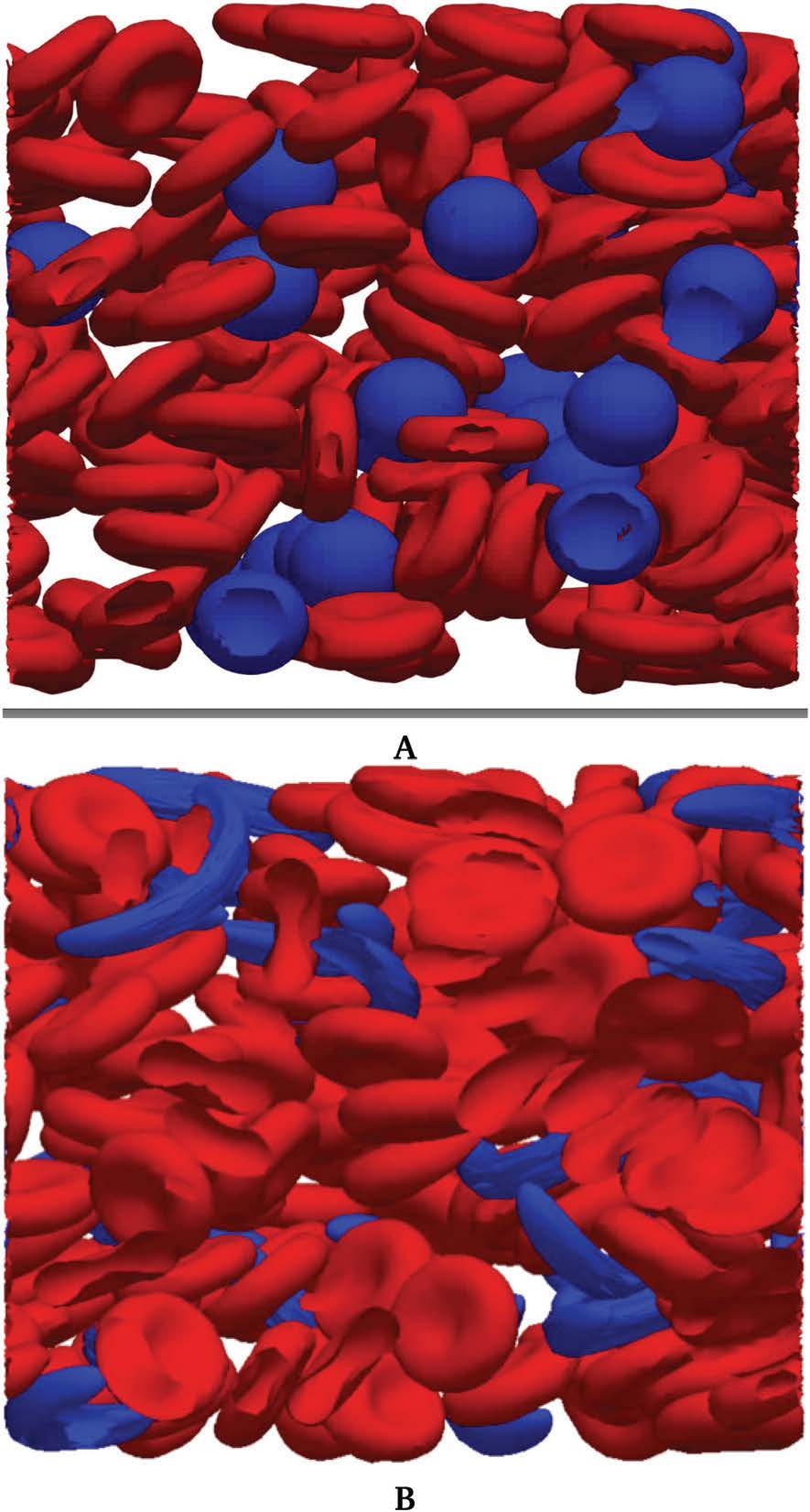Researchers investigate impact of viscosity on sickle cell anemia

Text block one Heading link

Red blood cells are one of the major supply chains for the human body. The incredible cells carry oxygen to organs all over the body, changing shapes to fit into different-sized blood vessels.
Because red blood cells play such an important role in the body, illnesses that impact their viability, such as sickle cell disease, can have devastating impacts.
One common form of the disease is sickle cell anemia, where a person’s red blood cells are shaped like crescent moons. These cells cannot flow as well as their healthy counterparts and often get stuck in small blood vessels, which can then slow or block blood flow and oxygen to parts of the body.
Richard and Loan Hill Department of Biomedical Engineering Assistant Professor Zhangli Peng and colleagues recently used cutting-edge computational modeling and experiments to see if they could unpack how the increased viscosity of sickle cell anemia red blood cells impacts patients.
Many researchers believe problems associated with the disease are caused by a combination of the cells’ shape, their increased rigidity, and the different adhesion between blood cells causing them to stick together, but it is not clear which plays the biggest role. Understanding these dynamics could ultimately help treat the disease.
“The increased viscosity of sickle cell anemia-affected blood can cause many problems, including stroke and vaso-occlusion, where the flow of blood is blocked to an area in the body that causes a painful crisis in patients,” Peng said.
In this study, the researchers focused on cases in which not all cells are affected by sickle cell anemia. For example, a common treatment for patients with sickle cell anemia is blood transfusions, which introduce healthy red blood cells into the body. This dilutes the number of unhealthy blood cells, which makes it harder to study what impact they are having on patients in the real world.
The team carried out a series of experiments that measured the viscosity of a mixture of fluids, varying the fraction of rigid sickle cell particles within a mixture of healthy cells. They also conducted a number of computer simulations of a similarly mixed sample of soft red blood cells and rigid particles, and measured their hydrodynamic interactions.
“Remarkably, we found that most of the increase in the viscosity of the sickled red blood cell suspensions, as compared to healthy red blood cell suspensions, is mostly due to the rigidity of the cells rather than their sickled shape,” Peng said.
Peng and his colleagues published their new observations in Soft Matter in a paper titled “The effect of rigid cells on blood viscosity: linking rheology and sickle cell anemia.” Peng and an experimentalist Antonio Perazzo from Princeton contributed to this paper equally.
Additional authors include Howard Stone from Princeton, David Wood from the University of Minnesota, John Higgins from Harvard Medical School, Y.N. Young from the New Jersey Institute of Technology, and Peng’s former PhD student Zhe Feng.
Moving forward, Peng said these findings warrant a follow-up investigation to look at how changing the rigidity of the red blood cells would affect viscosity.